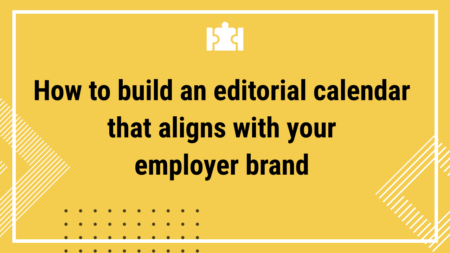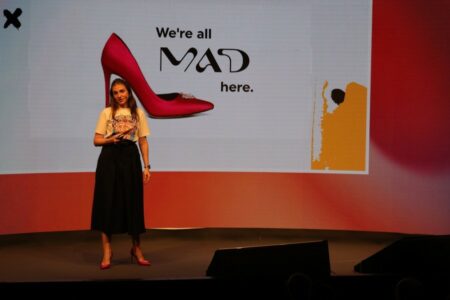The hybrid workforce is here to stay! Are you ready? It’s been over a year and we’re pretty sure you’ve tried everything to keep engagement and productivity afloat: virtual coffee sessions, virtual brainstorming, virtual meetings, virtual everything. Employee engagement keeps dropping because, let’s be honest, the virtual will never replace the physical.
But do HR leaders know that? Sure they do. In fact, study after study shows that HR leaders are finally prioritizing employee experience (EX). On the one hand, they have no choice. In the absence of a collaborative workspace and face-to-face meetings, the only option left is to accept the digital. On the other hand, we’ve started hating the digital because we’re humans; we’re a social species that need to cooperate in order to survive and thrive.
Numerous studies in neuroscience and cognitive psychology demonstrate that human cognition is not dependent on the way our brains process signals, but on the surrounding environment in which we receive the signals. Body language, for example, is limited in a video conference, making creating connections difficult and building relationships even more so.
The physical office has always been an opportunity for people to develop more meaningful connections because face-to-face conversations allow people to interpret moods, uncover personalities, and cement relationships. How do we retrieve those“human moments”? Can it be done from behind a screen? Not exactly.

But you know what they say – every cloud has a silver lining. This is where the hybrid-ready HR leader comes in. Not many companies are bringing people back to the workplace, although sooner and later it will happen. Rather than sit back to see what happens next, Company X is already: getting HR managers hybrid-ready and investing in EX. Can you afford to be left behind?
What does hybrid-ready HR even mean?
The pandemic has been a catalyst in HR because it demands a whole new set of abilities to speed up the reinvention of today’s modern leader. Emotional intelligence, in particular, has emerged as a designated trait of a successful manager. And yet, the soft skills gap is broader than ever. A study done by the Adecco Group on 8,000 office-based employees, managers, and C-suite executives, pinpointed that 28% of those interviewed witnessed a severe decline in mental wellbeing because of the pandemic.
Employees now have even higher expectations. They want their managers to guarantee them a positive, motivated, and collaborative workforce. The same study highlights that 74% of employees expect their managers to be more focused on a leadership style that is problem-solving, adaptable, and supportive. Let that sink in for a moment!
How do you build hybrid-ready skills?
First thing’s first: don’t view the hybrid workforce model as THE enemy. The biggest mistake you could make as an HR leader is to insist on not changing the way work was done before the pandemic. Instead, embrace change and treat non-traditional workforce models as an opportunity. This will showcase some skills that only looked good on paper prior to 2020. Those are agility, courage, ownership, and a flexible mindset.
Secondly, you might want to build on your skill set. The hybrid-ready leader of the future has the ability to employer employees, while at the same time building trust, establishing productive team climates, and streamlining collaboration.
According to a Gartner webinar poll, 78% of HR leaders identified leaders’ mindsets as a greater challenge than their skill sets in driving the success of a hybrid workforce model.
There are 4 types of hybrid-ready leaders. Which one are you? To see if your leadership capabilities are ready to embrace the hybrid workforce model, the matrix is simple: mindset & skill set.
- Hybrid champions – excellent, on-point mindset and a skill set ready to take the hybrid workforce by storm
- Hybrid strivers – excellent mindset but not enough skills to take the hybrid workforce by storm
- Hybrid resistors – excellent skill set but not enough mindset to accept that the hybrid workforce is the future
- Hybrid laggards – weak skills, closed mindset.
The hybrid workforce, HR’s main challenge
We’ve been working from home for over a year. For many companies, it has been an opportunity to convince themselves that WFH renders results. Needless to say, it doesn’t imply that employers will abandon the office because going to a different place that is not your home has never been about work, but about engagement.
In the context of HR, the biggest challenge leaders will have in a post-pandemic world is just that: to bring people back together; because nothing can instill a sense of commitment, cooperation, or dedication in an employee than a face-to-face encounter. Just because tech giants offer 100% remote working opportunities it doesn’t mean they’ve given up the physical office. This is where the hybrid workforce concept enters the scene.
Designed for human moments and tailored by technology, the hybrid workforce sets in stone a concept that is 100% work-from-home & 100% at the office. Whether we like it or not, it’s time for HR to fully grasp that the office of the future is a choice.
Microsoft came up with a great strategy. Instead of developing timelines, they’ve implemented Hybrid Workplace Dial – a 6th step hybrid workforce plan that enables employees to adjust their worksites based on health status, while at the same time remaining data-driven in their decision-making process.
[H3] It’s time to get out of the twilight zone!
Open your eyes & start reforming outdated recruiting practices. Otherwise, you’ll be stuck in a never-ending twilight zone. It’s been over a year since it all started, and little by little businesses are getting back on track. Job openings are rising again, which means that the hunt for securing and retaining top talent is more urgent than ever. The competition speeds up and even amid the pandemic, it remains a top priority to onboard the right people.
Three trends are making conventional recruitment go obsolete, according to Gartner:
- Certain skills have a short shelf life because of disruptive technologies. Studies show that only 29% of new hires have ALL the skills required to fill current roles. Key job functions (e.g. IT, sales, finance) demand an additional 10 new skills within the next 18 months. As remote work preferences increase, skill uncertainty will skyrocket due to automation of tasks and WFH redesign.
- Highly skilled candidates are not located in traditional talent clusters anymore (e.g technical colleges, high-end universities). Increasingly more people choose to learn on their own. Virtual learning is booming, giving them leverage and autonomy when searching for a new job.
- Candidates are becoming more selective, compelling companies to revise their EVP. Talented, experienced people/candidates are assessing their opportunities carefully.
Skills evolution outpaces the expertise of a hiring manager, and that’s because they’re evolving really fast. By the end of 2021, existing roles may need up to 10 new skills (TalentNeuron), and nearly 50% of prior skills in a role will go obsolete. For companies and HR leaders to build/develop the workforce they need, we recommend two main courses of action.
- Stop hiring for experience, hire for potential. To adjust to the new workforce landscape, the first step would be to stop treating the hiring process as a way to replace certain people. Don’t seek to fill a vacancy, hunting for that “mirroring effect” of the person that left. Just think about it, you may be hiring someone ready to face yesterday’s challenges, but will that someone be ready to face tomorrow’s challenges as well?
- HR leaders should stop pushing HR managers to look for candidates that can fill the current need of the business. They should broaden their perspective and look for skills that can help the company on a larger scale; skills that can help the company succeed in the future, too, not just in the present. “The first question HR asks a hiring manager shouldn’t be ‘Who do you need?’ The better question is ‘What do we need?’” says Dion Love, a vice president in Gartner’s HR practice. “HR executives are positioned to drive this conversation because they should have an understanding of long-term talent gaps at the organizational level.”
All eyes on employee experience (EX) 2.0
What exactly is employee experience (EX)? In simple terms, think of it as the sum of digital capabilities, communication & collaboration that an employee has on a daily basis at work – irrespective of device or channel. Keeping employees motivated and engaged has always been a priority, particularly for companies in the IT sector. The pandemic has only accelerated that interest and the technologies that enable it.
As a result, EX is moving from an important efficiency and retention strategy to a strategy centered on risk management and growth, as the underlying technologies create much-needed connectivity for organizations rethinking the very nature of how they work.
Technology has played a key part in revamping employee experience amid the pandemic. And yet, strong EX is negatively being impacted by legacy processes, poor management, or weak company culture. To avoid that from happening to you and your organization, ongoing investing in EX is crucial.

Transforming employee experience won’t happen overnight, and to get it done right HR should focus more on: getting their priorities straight, getting their platforms ready, and finally, getting their people more involved in the process. For example, certain employee experiences like the first day of work, a promotion, a hackathon won, etc matters to them personally. That special event holds a special place in their heart and it shouldn’t be forgotten or ignored. At the end of the day, we’re talking about experiences and human moments that can help an employee remember when it all started, why it started, and how it’s going.
Place your bets on human moments for increased EX
To increase EX, the key is to optimize moments with employee journey maps. According to a Gallup poll, increased employee engagement triggers a boost in productivity of 17%, at the same time reducing absenteeism by 41%. Whether an exercise, an experiment, or a test, employee journey mapping is an excellent way to boost both satisfaction and engagement. And that’s because we crave achievements, competitions, awards, and anything else that can challenge us.
In simple terms, an employee journey map can be described as an employee timeline. It starts from the day of the hire and it includes all the meaningful activities and milestones that employee has achieved at your organization. In terms of benefits for HRs, EJMs will:
- Help you understand an employee’s journey with the organization
- Enable you to visualize important milestones, interactions, experiences, achievements
- Increase productivity and motivation at the workplace. (e.g. Two years ago, on this day, X completed Y course and added one more skill to his/her portfolio. Let’s remind him/her of that, maybe he/she would like to sign up for another one)
- Boost engagement while WFH, constantly giving employees reasons to stay with X company
Social distancing has led to a significant drop in employee engagement. Working remotely seemed fun at first, but little by little, employees have realized that nothing can beat face-to-face interactions.
[H3] How to map out an employee journey to provide an experience that is valuable for both your organization and your people. Just follow the guidelines below:
- Segment employees and create a persona for each category in your organization.
- Simplify the job application process & make it smooth as you can
- Make your virtual onboarding process interactive, bringing in both new and old employees. This will help newcomers get used to the vibe your people have and become more comfortable opening up
- Do the money talk and communicate benefits clearly
- Provide L&D opportunities. According to LinkedIn, 62% of companies are aware that L&D programs are vital for employee engagement and retention
- Set up opportunities to make new employees feel valued, accepted, and acknowledged.
- Set goals and timeframes for attaining those goals to keep employees motivated, challenged and engaged (make sure to include every important goal in their EJM)
- Be appreciative of their daily efforts & offer feedback to make employees feel that their work matters.
Final thoughts
“Optimize for human moments” should be the motto of the hybrid-ready HR leader! Whether we like it or not, the hybrid workforce is here to stay and there’s nothing we can do to change that. Accept technology, accept WFH, accept that you need to acquire new skills to keep employees engaged, boost productivity, and maintain retention. HR is not a Jack of all trades, so it’s okay to admit that you don’t know it all. Mental wellbeing matters just as much as health and safety, meaning that if you truly want to be hybrid-ready, the key is to recognize how far you’ve come, accept you can’t go back, learn your lesson, and move on.






